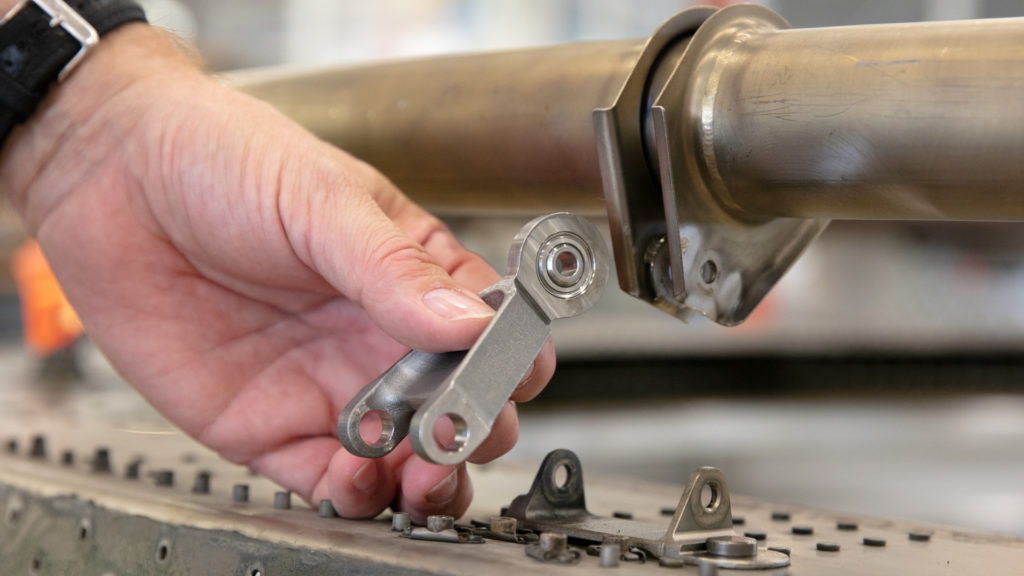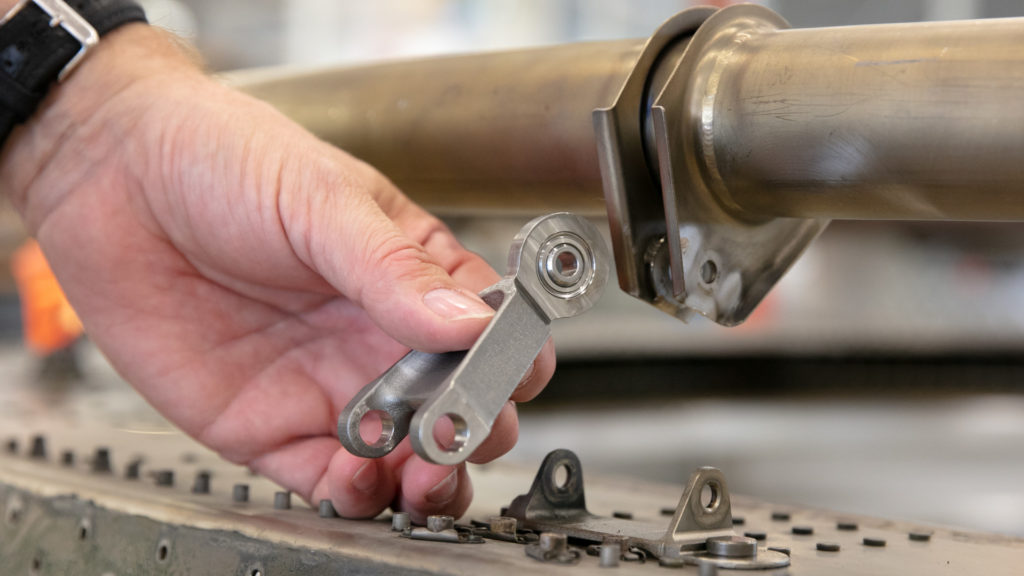
The part is called an “A-Link,” nine of which fix a circular hot air duct within the engine’s inlet cowl, in turn protecting it from ice buildup. Traditionally made with forging, these A-links, tend to wear at their mounting holes due to the vibrations that occur, necessitating replacement every few years. Now, Lufthansa and Premium AEROTEC have 3D printed spares with laser powder bed fusion (LPBF). The companies report:
¨Premium AEROTEC carried out a large number of so-called ‘print jobs’ with test specimens, with constant settings of all process-relevant parameters. This way, it was finally possible to establish a constant and reliable process and to prove that the highest requirements in terms of material properties are also achieved here. In terms of tensile strength, the additively manufactured A-Link is even superior to the original part.¨

This component is to be used on the Lufthansa fleet and marks the first time that Premium AEROTEC is making a 3D printed part available outside of Airbus. In this case, they’re being applied to engines made by International Aero Engines, a joint venture between Pratt & Whitney, Rolls-Royce plc, the Japanese Aero Engine Corporation and MTU Aero Engines.
“Premium AEROTEC is an international pioneer and technology leader in the additive manufacturing of aerospace components. Our company has already been applying this technology in the series production of complex structural components since 2016. I am very pleased that in cooperation with Lufthansa Technik we can now once again demonstrate our comprehensive expertise in 3D printing,” said Ulrich Weber, Chief Operating Officer at Premium AEROTEC.
“We have been producing components for the aircraft cabin, the vast majority of which are made of plastic, using 3D printing for years. Now we are able to demonstrate that structurally relevant metal parts for use outside the cabin can also be manufactured additively and approved for flight operations. In this way, we have not only achieved a cost saving for the component in question, but also defined and qualified all the necessary processes for the application of this groundbreaking manufacturing method for structurally relevant metal parts,” said Soeren Stark, Chief Operating Officer of Lufthansa Technik.
This first load bearing part is a huge step and means that we now potentially have load bearing parts flying on passenger aircraft. This is both exciting and terrifying. Lufthansa Tecnik has a near unassailable lead in terms of respect within maintenance circles. The large German aircraft MRO and outfitter has a stellar reputation. Premium Aerotec is an aerospace Tier 1 aero structures supplier and an Airbus subsidiary. Therefore, I know that everyone crossed their “t’s” and dotted their “i’s” on this. Their combined experience and technical nous is world-leading in their fields.
However, as a 3D printing person, part variability in the build means that I’m intensely skeptical of any long-term load bearing parts. Internally, components could still have some variability and respond differently to loads over time. This is a huge leap, but we’re in the the big leagues now. Lives are in our hands, this time.
Subscribe to Our Email Newsletter
Stay up-to-date on all the latest news from the 3D printing industry and recieve information and offers from thrid party vendors.


Recent Comments